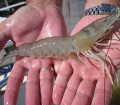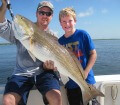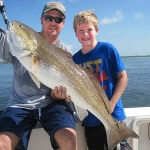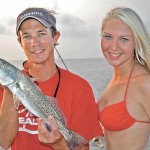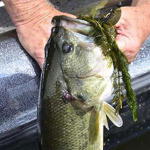John’s Note: Sonny Schindler and the other captains who work for Shore Thing Charters (http://www.shorethingcharters.com/, 228-342-2206) have developed some of the most successful summer tactics for catching speckled trout and redfish on the Upper Gulf of Mexico coast. These captains fish out of Bay St. Louis, Mississippi, and guide in both Mississippi and Louisiana waters. We’ve asked Schindler to give his best tactics and techniques for catching speckled trout, redfish and other species in warm weather.
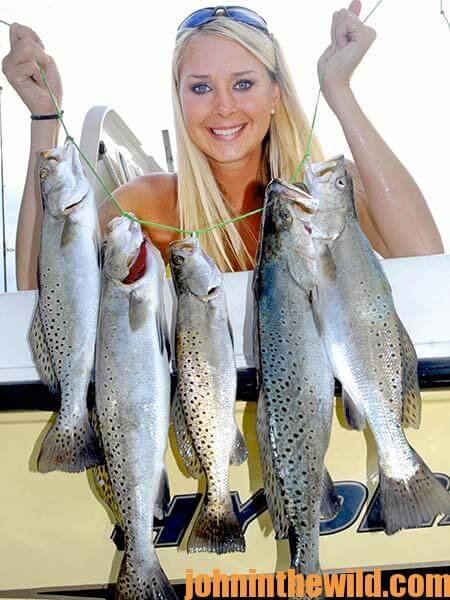 Question: Captain Sonny, what type of reefs are you fishing for specks and reds?
Question: Captain Sonny, what type of reefs are you fishing for specks and reds?
Captain Sonny: We fish a lot of natural reefs out in the Mississippi Sound that are littered with oyster shells. These reefs may be as shallow as 3 feet deep, and then drop off to possibly 8 feet deep. We also fish a lot of reefs built by the Mississippi Department of Wildlife, Fisheries and Parks. These artificial manmade reefs are all across the Mississippi Gulf Coast. Some reefs are 5 to 10 feet deep, and others are simply rubble above the surface. These artificial reefs have become magnets for speckled trout, redfish, sheepshead, drum, flounder and many inshore species. Some of these reefs may only be 1/2 mile off the beach, and they’ll also be magnets for bait fish. Those nearshore reefs with an abundance of bait fish on them will pull in big schools of speckled trout and redfish.
Question: Captain Sonny, when you’re fishing artificial reefs, what time do you try to get to the reef, how do you fish it, and when do you leave?
Captain Sonny: The manmade reefs are very popular, because they’re close to shore. Even small skiffs can get out to them and fish them.
We try to get to the reefs as early as possible, because on some days the reefs become crowded.
If we don’t fish the artificial reefs early, we try to fish them later in the day, when most anglers have left the reefs. One of the big advantages we have here in Mississippi is since there are so many artificial reefs to fish, if a crowd of anglers builds up on one reef, we can move to a different reef with no anglers or few anglers. But when fishing artificial reefs, the old saying, “The early bird gets the worm” always applies.
Question: Captain Sonny, how do you make the decision to switch from live bait to artificial bait?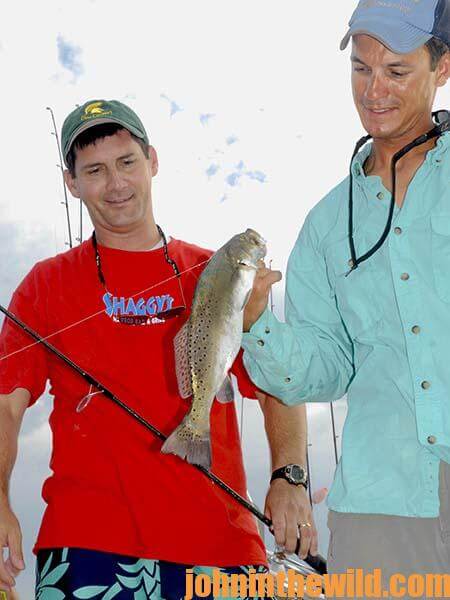
Captain Sonny: We let the fish tell us when to switch from live to artificial bait. If we’re catching specks and reds on almost every cast, then we know the fish are aggressive. We’ll switch to artificial lures like grubs to see if the fish will take the artificial lures as well as they have the live bait. If the water is very shallow, we’ll usually fish a tight line and either hop or skip the jig along the bottom. If the water’s deep enough, we use a popping cork called the Boat Monkey that’s weighted.
We’ll have our jig suspended about a foot below the cork.
The weighted popping cork allows our anglers to cast much farther away from the boat than they can cast with an un-weighted cork. We can cast into the wind, as well as with the wind. Besides making a lot of splash when you pop them, those popping corks also make a lot of noise. Artificial lures let our anglers keep their baits in the water longer, catch more fish and waste less time going back and forth to the live bait well.
Some of our favorite types of grubs are Matrix, produced in Slidell, Louisiana. We like the salt-and-pepper color, opening night, clear and the LSU color, which is purple and gold. These grubs have real big paddle tails. When they come through the water, they produce a realistic swimming-type action. These baits are called Cocahoe-style baits because they resemble the Cocahoe minnow. You easily can thread a 3/8-ounce jighead on these grubs and cast them a country mile. In clear water, we’ll tie a 1- to 1-1/2-foot fluorocarbon leader to our main line. If the water is stained, we’ll use a little bit heavier leader. We also fish the jigs under our Boat Monkey popping corks with 12-16 inches of leader below the cork.
Some days, the trout will be holding in the mid-story of the water. Other days, they’ll be holding closer to the bottom. We set the depths of our jigs to fish through the story of water where we find the most trout holding. On some days, the specks and reds will be real aggressive and attack the jigs as soon as they hit the water. On other days, when they’re holding close to the bottom, you’ll be more productive hopping the jig to get the specks’ and reds’ attention. If the fish are holding over the tops of grass beds, you may have to always fish with a popping cork, or else you’ll snag grass on every cast.
Check out this video for more information from Captain Sonny Schindler
To learn more and get John and Denise Phillips’ eBooks and print books “The Best Wild Game & Seafood Cookbook Ever: 350 Southern Recipes for Deer, Turkey, Fish, Seafood, Small Game and Birds” and “Fishing Mississippi’s Gulf Coast and Visitor’s Guide.” Click here to get these books.
About the Author
John Phillips, winner of the 2012 Homer Circle Fishing Award for outstanding fishing writer by the American Sportfishing Association (ASA) and the Professional Outdoor Media Association (POMA), the 2008 Crossbow Communicator of the year and the 2007 Legendary Communicator chosen for induction into the National Fresh Water Hall of Fame, is a freelance writer (over 6,000 magazine articles for about 100 magazines and several thousand newspaper columns published), magazine editor, photographer for print media as well as industry catalogues (over 25,000 photos published), lecturer, outdoor consultant, marketing consultant, book author and daily internet content provider with an overview of the outdoors.

